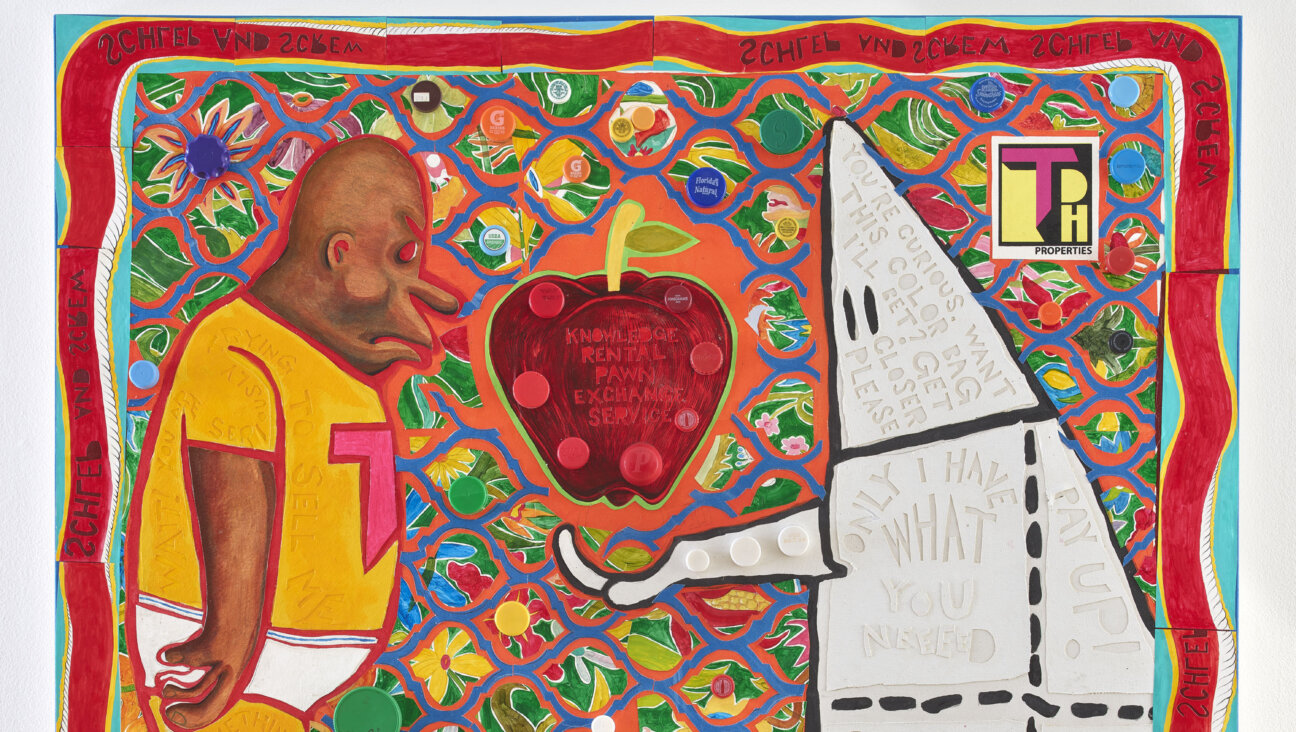Excerpt: Peter Manseau’s ‘Rag and Bone’
© 2009 by Peter Manseau. Reprinted by arrangement with Henry Holt and Company, LLC
This is a book about dismembered toes, splinters of shinbone, stolen bits of hair, burned remnants of an anonymous rib cage, and other odds and ends of human remains, but it is not a book about death. Around every one of the macabre artifacts that, for a variety of reasons, have come to be venerated as religious relics, circles an endless orbit of believers and skeptics, bureaucrats and clergy, fathers and mothers and children, pilgrims, beggars, con artists, and just plain curious souls. This is a book about life.
Before I saw my first relic, about ten years ago, I stood for what seemed like hours in a line of tourists wrapped around the altar of an Italian basilica, under a tableau of the stations of the cross carved in wood. Each of the stations’ fourteen squares depicted a scene from the crucifixion as large and menacing as a horror movie poster, but no one paid them much attention. Everyone was too busy checking their watches, folding pages in their Umbria guidebooks, laughing and grumbling and planning in a dozen languages.
Directly in front of me, a young mother with dyed black hair and a matching biker jacket watched her toddling son clap his palms on the polished floor and then warned him in German—“Nicht anfassen!” Don’t touch that! — each time he put his hands on something that seemed dirty or fragile. The boy had blond hair and spitty wet fingers and was eyeing a piece of dried gum stuck to one of the basilica’s marble columns. Both column and gum seemed to have been there for an eternity, but when the boy pinched the gray wad his mother hissed —“Horst! Nein!”— as if its removal would bring the whole place tumbling down.
The line shuffled forward and little Horst fell in behind his parents, tucking his face into the back of his father’s knees. Latching on with one hand to a fold of green denim, inserting his other hand in his mouth for safekeeping, he let his feet drag on the ground to show how bored he was with all of this. He seemed to be about three, and I wondered if his parents had tried to explain why they had brought him to this dark church in the middle of a lovely autumn day. Had he understood what he was waiting for, he might have appeared more excited.
At the end of this line, which stretched from the entrance fifty yards behind us to a point farther ahead than we could see, there was said to be a very special tongue. A human tongue from a human head. A tongue that was believed to have the power to give speech to the dumb and eloquence to the tongue-tied. A tongue so potent—legend and guidebooks proclaim—that it was found whole, pink, and healthy after the body it had spoken for had gone to dust.
It was not just any tongue, but La lingua del Santo, “The Tongue of the Saint.” In the ancient city of Padua, two hundred miles or so north of Rome, “the saint” refers always and only to Saint Anthony, whose basilica this was. Born at the end of the twelfth century in Portugal but embraced most fervently by Italian Catholics, Saint Anthony is the patron saint of lost objects. All of us, a thousand tourists on any given day, were there to see what was left of him.
I was standing on my tiptoes, craning my neck over the crowd to have a look at the end of the line, when someone made a pssst noise and others clucked in agreement, raising and pointing their chins in a gesture meant to urge me on. I turned to see that the line had moved forward. There was now ten feet of empty floor between the German family and me. I put my hand in the air as apology to the waiting throng and half-jogged to close the gap.
When I got there, Horst was stretched out on the floor. His mother glanced back and then hoisted him up by his belt, apologizing with her eyes.
The pilgrims lurched forward, around a bend now, and I followed the Germans into a narrow passage behind the altar. Five yards ahead, the line changed from relative order to a small-scale mob. Some stopped and turned to the left to take a long look while others forced their way through the traffic of bodies, impatient to move on now that the waiting was done. I couldn’t yet see what was causing the commotion, but it was impossible to miss the fireworks of camera flashes blinking off the walls, despite the repeated warnings we’d all received against turning this holy place into a photo shoot.
At least our crowd wanted only pictures. Back in the heyday of Christian relic veneration—roughly the eleventh century through the sixteenth, when the Protestant Reformation brought the boom times of relics to an end—religious authorities had to keep constant guard over the sacred remains they displayed. A story is told of an English bishop who, while on pilgrimage in France, toured a monastery that had a shrine containing the full skeleton of Mary Magdalene. Impressing the monks with his piety, the bishop stooped to put his lips on the holy lady’s hand. No one noticed that, by the end of his kiss, he had bitten off a piece of her finger. He held it in his mouth for the rest of the monastery tour, then returned to En gland to build a shrine of his own.
So it’s no surprise the basilica guards were content to let the tongue photos slide. Not that they could have done much about it. The number and speed of the flashes in the passageway suggested that the crowd of Australians, Germans, Koreans, and at least half a dozen other nationalities was intent on spending its time in Padua as paparazzi of the holy dead.
In the middle of the hubbub, a family of four had dropped to their knees in front of the entrance to a small chapel, which I could now see was to blame for the gridlock.
“La Cappella delle Reliquie,” an Italian whispered behind me. From others in line I heard it identified in French and Spanish as La Chapelle des Reliques and La Capilla de las Reliquias, “The Chapel of the Relics,” though a sign in English identified it with less poetry as “The Treasury.” It contained Saint Anthony’s tongue, jawbone, and a small piece of cartilage believed to be part of his larynx.
The kneeling family had been mostly silent through the forty minutes I’d been in line, so I couldn’t guess their nationality, but their manner and dress suggested they were some variety of Europeans. When they rose, they crossed themselves with the absentminded ease of Crusaders’ distant kin. Wherever they were from in what remains of Christendom, kneeling before pieces of a saint was a part of them, as it had been for generations beyond memory, a tradition unchanged for a thousand years.
The Germans fought their way through the throng, and I followed close behind, moving easily through the wake created by the stroller the father pushed before him. When the mother reached the reliquary, her mouth dropped open. She called out to her son, “Horst! Guck mal! Eine Zunge!”
But Horst didn’t seem to hear her. He turned and ran into the crowd, disappearing among the tourists’ legs as their cameras flashed like strobe lights. When his mother raced to catch him, it was finally my turn to approach the tongue.
Reaching the pedestal on which it stood, I was surprised to see that the reliquary looked like nothing so much as a model light house: a tall, thin column supporting a crystal cylinder—though in this case the cylinder contained not a lantern but a cone-shaped chunk of human flesh, a tiny scrap of body behind glass.
As the story goes, at the time of its discovery in the saint’s tomb eight hundred years before, the tongue had been so moist and plump it looked ready to deliver a sermon all on its own. Now, the ornamentation of the gold around it seemed more appropriate for the Hope diamond than for the chewed piece of licorice the tongue had come to resemble. The pedestal was spotted with fingerprints, and more than a few pilgrims went so far as to stand on their toes to plant kisses directly on the marble around the reliquary’s base. Centuries of such contact had added a greasy bit of color to the gray stone, a soft pink mix of lipstick, finger oil, and spit, evidence that as many people as there were smudges had stood on this spot and tried to make contact with Il Santo — and, through him, with God.
I put my fingers to my mouth and then as close to the relic as I could reach. The stone was cold to the touch but slightly slick, like a sweating beer bottle on a summer day.
On the way out, I saw little lost Horst out of the corner of my eye. He had wandered alone into the corner of the chapel and now stood puzzling over what all the fuss was about. One hand down his pants, the other up his nose, he looked on the traffic jam of adults crowding the holy tongue like he was the only one with his priorities straight.
A message from our CEO & publisher Rachel Fishman Feddersen

I hope you appreciated this article. Before you go, I’d like to ask you to please support the Forward’s award-winning, nonprofit journalism during this critical time.
We’ve set a goal to raise $260,000 by December 31. That’s an ambitious goal, but one that will give us the resources we need to invest in the high quality news, opinion, analysis and cultural coverage that isn’t available anywhere else.
If you feel inspired to make an impact, now is the time to give something back. Join us as a member at your most generous level.
— Rachel Fishman Feddersen, Publisher and CEO






















